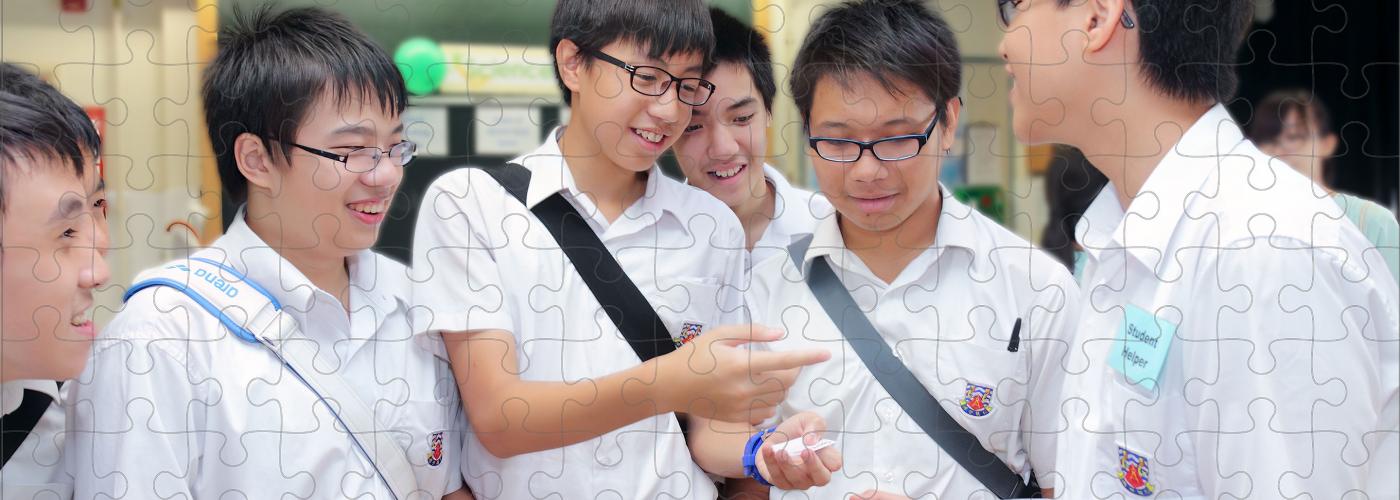21st February 2023
It is well acknowledged among TESOL & TEFL instructors that a focus on receptive skills is important in language learning. Learners who are effective readers and listeners in English are better able to communicate and open themselves up to useful sources of language input. It is, therefore, important that receptive skills lessons engage students and provide practice which is useful for the development of their skills. This blog will outline how ‘jigsaw’ reading and listening activities can do this.
What is jigsaw listening/reading?
Put simply, a jigsaw activity is one where students read or listen to different texts or different parts of the same text and then work together to complete a task. In other words, after reading or listening, there is an ‘information gap’. One student has information that another does not and vice versa. A simple example would be students reading about the national dishes of different countries and then answering questions about these dishes in groups. More examples of activities I have used in class are listed later in this blog.
Why use jigsaw activities?
It is quite common to see receptive skills lessons where students read or listen to a text and then answer comprehension questions. In Learning Teaching, Jim Scrivener points out two issues with this kind of lesson:
- It is not a very natural way to read or listen. It doesn’t match the way in which people read or listen in real life.
- It is more likely to test students’ understanding of the text they are reading or listening to than to help them develop their receptive skills.
I would also add that such activities are not particularly motivating for students and may bring back bad memories of their language classes in public school or of standardised tests.
Jigsaw activities, in contrast, mirror the way people read or listen in real life, can help students to develop their receptive skills and can be highly motivating.
Real life listening
It is quite common in day-to-day life that people listen to or read something that they find interesting and then share the contents with someone who has not read or listened to that article, radio show, podcast, etc. By designing activities which encourage students to read or listen and then share, we are giving students practice which is applicable to the real world.
Development of receptive skills
It is quite difficult to ascertain whether reading and listening practice is leading to the development of students’ skills. We certainly cannot measure this in the same way as we can test whether a student has understood a grammar rule, for example. I think the important thing to look out for in a receptive skills lesson is the extent to which students engage with tasks and the level of challenge there seems to be. Specifically, some things which I look out for are:
- Do students complete tasks very quickly and easily or do they need to read or listen multiple times to arrive at understanding?
- When checking answers with partners, do they simply look at each others’ answers and confirm or do they have some deeper discussion, go back and check notes, the original text etc?
- Do they get every answer correct straight away or are there some incorrect answers or missing information?
If the first option in each of these cases is true, the chances are that students have not been challenged sufficiently and they are, therefore, not developing their receptive skills. If the second options are true, there is probably enough challenge, more likely leading to the development of their skills. My experience is that, when listening or reading as a class to answer a series of questions, there is not the same level of challenge or engagement as there is in understanding a text in enough detail to be able to summarise it for a partner who has not listened to or read it.
Motivation
As well as challenging students more, understanding something and then sharing that understanding with a partner can also be more motivating than understanding a text to answer questions. Students’ engagement in the process of listening or reading is likely increased by knowing that they are responsible for gaining enough understanding of a text or part of it to complete a later task with a partner. Engagement in later discussions is also likely increased by having something real to share.
How to use jigsaw activities in class
Jigsaw reading activities are generally easier to set up than listening activities in both the physical and online classroom. In a face-to-face class you can simply give some students one text (or a part of it) and other students a different text. In the online classroom you can either distribute different texts to different students using the chat box function or show two texts on the screen and ask different students to take screenshots of different texts.
It is also fairly simple to set up jigsaw listening activities in the online classroom using similar methods. You can distribute different audio files to different students, or upload the files to Google Drive, One Drive etc and provide students with different links. If you plan to use jigsaw listening activities in a physical classroom, it is advisable to get students into the habit of bringing earphones to class. They can then use their electronic devices to access audio files on Drive sites or they can be distributed through social media, messaging apps or on VLEs, such as Moodle. Failing this, you can ask half the students to go to a different classroom and listen to one recording while the remainder of the class stay in the original classroom and listen to another one.
An extra advantage of having students listen on their own devices is that they have control of how they listen. They are able to listen again to parts they have misunderstood, leading to more listening practice.
Examples of jigsaw activities
There are many different jigsaw listening and reading activities you can do in class. Some involve students completing a specific task and, in others, they simply share what they have heard or read with each other. Although specific tasks can give some focus to students on what to listen or read for, I also find simply sharing information with each other can be extremely motivating for students and lead to useful receptive skills practice.
Below are examples of jigsaw activities I have tried in my own classes:
- Half the students watch part of a documentary about the weather in the UK, the other half watch one about the weather in China. They then work together to summarise the similarities and differences.
- Half the students watch a YouTube video explaining the rules of cricket, while the other half watch a video explaining the rules of rounders. They then explain to each other how to play the different sports.
- Students read information about different flats and decide as a pair which they would like to rent.
- Students listen to ‘podcast’ style recordings. Half listen to one about the invention of the Americano, half about the invention of Sushi. They then summarise how each was invented to a partner.
One point to add about these activities is that it’s often a good idea to have students check their understanding with someone who has read or listened to the same text as themselves before they share their understanding with a partner who has not. This will mean they are more confident in their understanding. It may also give them more practice as they will likely listen and read again for any points where their understanding differs from their partner or neither they nor their partner have understood something.
Of course, as with any receptive skills or other type of lesson, students’ engagement will depend on the choice of topic. It is also important to make sure that the texts you select are appropriately challenging for the students’ level. Assuming that these conditions are met, jigsaw listening and reading activities are an engaging way to give students natural, useful and motivating receptive skills practice.
Want to deliver engaging lessons?
Take Trinity’s internationally recognised TESOL qualification with EfA.



